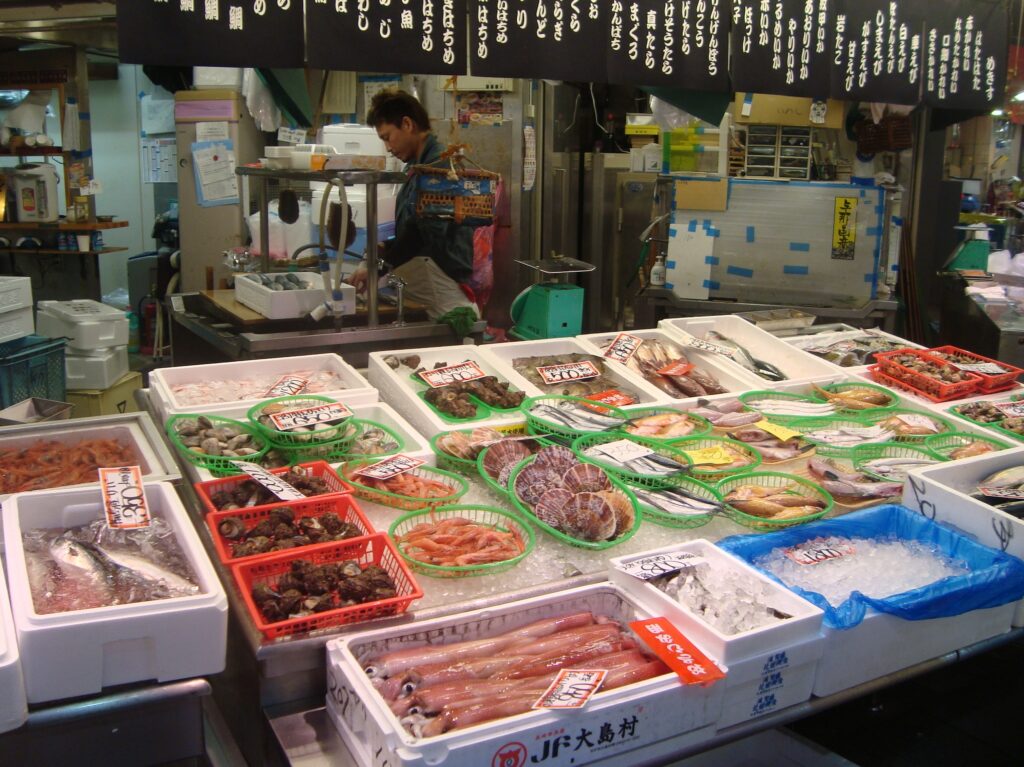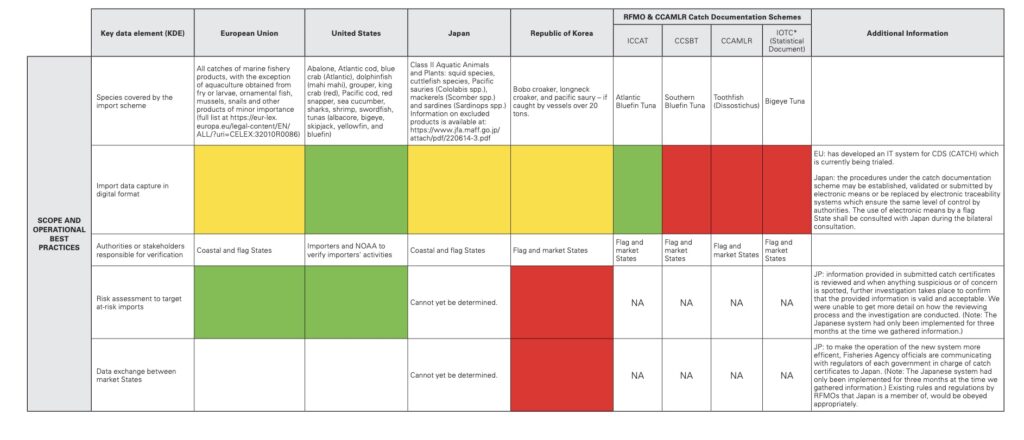Illegal, unreported and unregulated (IUU) fishing continues to threaten our ocean, the livelihoods of coastal communities, and the integrity of global seafood markets. But momentum is building to strengthen catch documentation schemes that prevent illegal seafood products from entering global markets, like the EU, the US, Japan and the Republic of Korea.
A new report from the EU IUU Fishing Coalition shows that stronger and smarter catch documentation schemes as part of national import control schemes are emerging as a crucial frontline defence in the global fight against IUU fishing. As more countries develop catch documentation schemes, inconsistent data requirements fragment the global system—so that can be exploited by bad actors. It is crucial that as more market States establish such schemes, they prioritise harmonisation with existing schemes in order to establish a robust baseline helping both themselves and those in the supply chain.

The importance of import controls
Import controls—such as Catch Documentation Schemes (CDS)—require traceability data from the point of capture to the border. They are designed to help governments identify seafood that is high-risk of being caught through IUU fishing and to prevent illegal products entering the market.
Our latest comparative analysis evaluates how four of the world’s biggest seafood markets—the EU, US, Japan, and South Korea—are performing. Together, these markets represent over 60% of the global value of seafood imports, making their import controls key in the global fight against IUU fishing.
Who’s leading the pack?
We assessed each country against 17 Key Data Elements (KDEs) that are essential to trace and verify seafood legality. These capture who fishes what, where, when and how and include data fields on vessel identifiers, catch area, transshipment data, and fishing gear type.
- South Korea is the first market State to meet all 17 KDEs—but only for three species.
- The EU will require 16 out of 17 KDEs by January 2026 with the rollout of its updated Catch Certificate and the digital CATCH IT system.
- Japan and the US require only 12 KDEs, lacking key elements such as mandatory IMO numbers and international radio call sign (IRCS) information. Our report provides recommendations on improvement and expansion of these systems.


Why harmonisation matters
Despite progress, there’s a growing risk of creating a patchwork of incompatible systems. As more countries introduce catch documentation schemes, which are increasingly digitalised, diverging standards can lead to confusion, enforcement gaps, impeded interoperability and exploitation by bad actors. Without harmonisation, these systems are at risk of falling short—allowing IUU-caught seafood to slip through the cracks.
What needs to happen next?
To prevent the flow of illegal products into global markets, the EU IUU Fishing Coalition is calling for:
- Full adoption of the 17 KDEs across all market States.
- Focus on digital systems to speed up verification, information exchange and reduce fraud and cut costs.
- Expansion of species coverage, moving beyond high-risk species to all wild-caught marine species.
- Robust risk assessments to focus scrutiny on the most suspicious consignments.
- Cross-border data sharing to track products and actors across supply chains.
Most importantly, States must work together—not just within national systems but through Regional Fisheries Management Organisations—to adopt binding, interoperable multilateral documentation schemes.
A turning point
With new regulatory milestones in the EU, Japan, South Korea and potential developments in the US and Australia, we are at a turning point. Aligning systems now can deliver globally harmonised and robust import control schemes that remove the incentive for IUU fishing and lock illegal seafood out of our markets, for good.
Read the report
Report is available here in English.
Translations to follow shortly.
